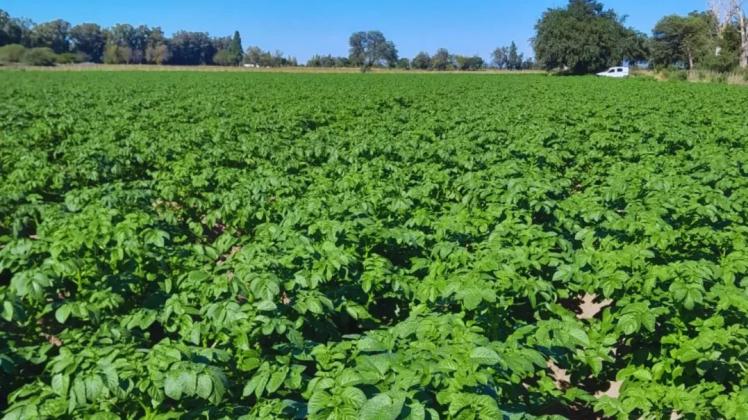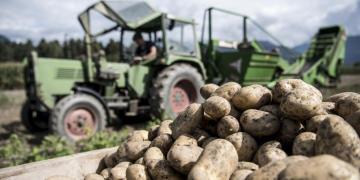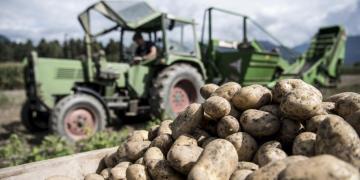Argentina (Villa Dolores): INTA innovates with subterranean drip irrigation in potato crops
Producers in Traslasierra, in collaboration with INTA Villa Dolores, are implementing an advanced irrigation system to address water shortages and increase productivity by 20% to 30% through precision management and fertigation.

Potato cultivation in the Traslasierra region is periodically facing increasing water constraints due to a combination of lower rainfall, high crop demand, and the limited efficiency of traditional irrigation methods. Faced with this challenge, the National Institute of Agricultural Technology (INTA) Villa Dolores, led by agricultural engineer Silvana Walter, is supporting local producers in the implementation and evaluation of subsurface drip irrigation, an alternative that promises to transform water management and nutrition for potato crops.
Walter, head of the Rural Extension Agency at INTA Villa Dolores, emphasized to MundoAgro that "irrigation is a key factor in our region." She noted that traditionally, potatoes are irrigated by gravity (using the furrow irrigation system with water from the La Viña dam) or through pivot systems with groundwater. However, furrow irrigation has a low water efficiency, which, according to measurements by INTA and other entities, barely reaches 40%.
Water saving and precision management
The search for technologies adapted to local conditions, especially in plots where installing a pivot is not feasible, motivated the adoption of subsurface drip irrigation. As the expert explained to MundoAgro, "the efficiency improvement is notable: if you compare a hectare irrigated by drip irrigation with a hectare irrigated by furrow irrigation, you could irrigate three times more with the same amount of water."
In addition to significantly increasing water efficiency, the new system opens the door to precision management by allowing the integration of fertilization with irrigation, a process known as fertigation. Walter explained that "fertigation is much more efficient than applying fertilizer directly to the soil, as it allows the precise amount of fertilizer to be applied to the crop."
The equipment has a useful life of 12 to 15 years INTA Villa DoloresAnother key operational benefit is simplicity. Operating the system proved to be much easier than furrow irrigation, which is done manually and can require more than 24 hours of work, even overnight. Subsurface drip also makes it easier for growers to adjust the frequency and amount of water based on crop demand and weather conditions, avoiding the delays or overapplications that often occur when coordinating with traditional irrigation consortiums.
Technical adaptation and concrete results
In Traslasierra, water demand for the two potato production cycles (late, from February to June, and mid-early, from July/August to November/December) ranges between 500 and 800 millimeters over cycles of approximately 100 days. INTA monitored two recent experiments: one between August and December 2024 and another between February and June 2024.
One of the main technical questions was whether the water could rise by capillarity from the buried drippers to the potato root system, unlike other areas of Córdoba where the technology is already used. Evaluations confirmed that the system is suitable for the local crop in Traslasierra, verifying the water’s rise.
It was also confirmed that the buried system does not interfere with harvesting, which is done mechanically with a harvester. The irrigation laterals are placed at a depth of 35 to 40 centimeters, Walter explained, while the tubers develop above, at about 15 to 18 centimeters, ensuring that the laterals are not affected by the machinery.
Increased productivity
César Díaz Nicotra, an engineer at Argeswater SRL, advises producer Antonio Martínez. He implemented the underground drip irrigation system on six hectares of the La Primavera ranch in the town of San José. He highlighted the support provided by INTA (National Institute of Agricultural Technology) in achieving positive results with this innovation in Traslasierra.
The current crop season is projected to reach a production of around 33 tons per hectare. This represents a yield differential of between 20% and 30% compared to plots that do not use this technology. Díaz Nicotra explained that subsurface drip irrigation allowed for optimized fertilization throughout the cycle and, consequently, increased the crop’s productive potential. With these results, the company decided to expand its irrigation equipment to 25 hectares on its farm in Los Cerrillos, near Villa Dolores.
Long-term investment
Despite the clear benefits, implementing this technology requires a significant initial investment. Silvana Walter mentioned that, on the site where they worked, they had to waterproof a dam with a geomembrane and install the entire pumping, filtration, and distribution system.
However, INTA emphasizes that this technology has an estimated useful life of 12 to 15 years and should be considered a long-term investment, especially in the context of the water shortages facing the region.
INTA’s support is crucial, allowing the company and producers to "adjust the technology using data from local trials: design the equipment, measure water and soil nutrients, and plan fertilization according to environmental demands," Díaz Nicotra concluded.
Fuente: Traducido por Argenpapa de: cba24n.com.ar




